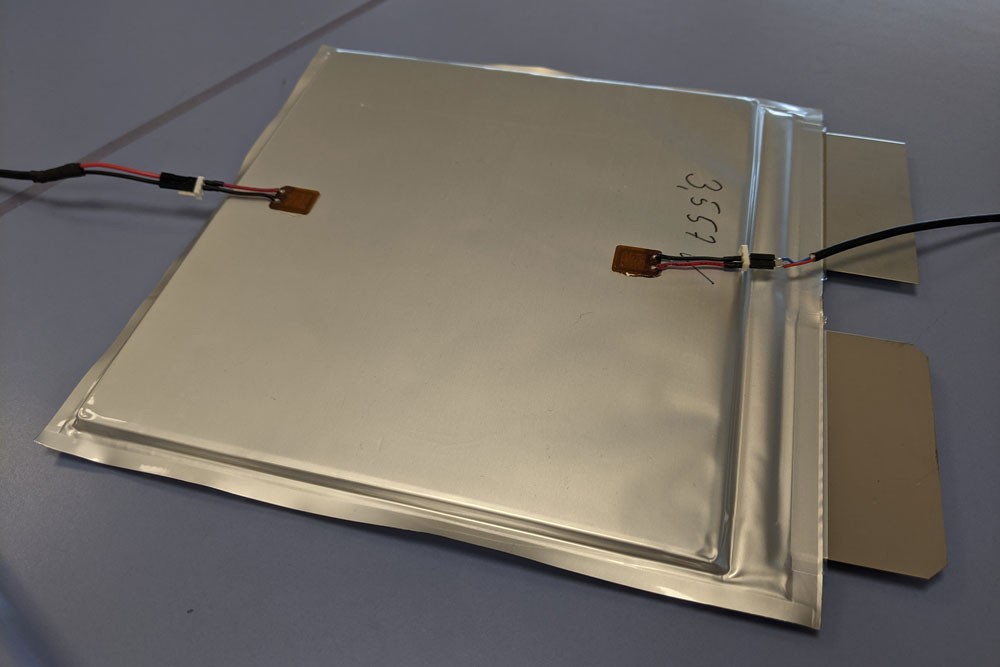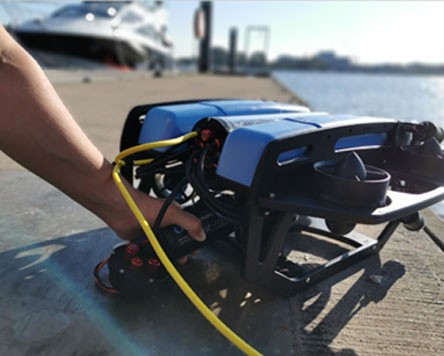Fraunhofer IKTS analyzes heavily loaded energy storage systems and teases out mission reserves
Energy boost for underwater robot
With modern non-destructive test methods, scientist of Fraunhofer IKTS and the research group Smart Ocean Technologies (SOT) analyze the battery state of underwater robots, so-called Unmanned Underwater Vehicles (UUV). Such underwater vehicles are being used more and more frequently and for longer periods of time: they inspect drilling platforms, maintain underwater gas pipelines, search for cracks in offshore wind turbines, collect marine data or map the fauna and flora on the seabed. Better battery management should now reduce deployment costs and ensure that these underwater robots can dive for longer.


“If we can reduce the cost of operations by ten percent and extend the dives by a few hours, that would be a big step forward“, emphasizes Dr. Lars Schubert, head of the department Condition Monitoring and Non-Destructive Testing at Fraunhofer IKTS. Through the project, the researchers gain new insights into the discharge processes in the battery at the cell level and into the internal aging processes. Because the energy storage devices of underwater robots, such as Remotely Operated Vehicles (ROV) and Autonomous Underwater Vehicles (AUV), must function under far more difficult conditions than, for example, batteries for electric cars: Some UUVs can dive up to one kilometer deep, where the temperature gradient puts a lot of stress on the technology and influences the discharge process.
Reducing operating costs for underwater robots
The diving robots are usually deployed and remote-controlled by ships of specialized service providers. However, the effort involved has its price: deployment costs of around 100 000 dollars per day and ship are quite common here. However, such robotic maintenance is essential to ensure that pipelines, offshore platforms, underwater data cables and other critical infrastructures in the sea function reliably. To ensure that these expensive maintenance missions do not have to be aborted prematurely due to empty batteries, a safety reserve of 20 percent of the battery capacity is usually included today. The batteries’ state-of-charge of can already be measured today – but only summarily and comparatively inaccurately via the voltage, current and temperature of the entire battery. One goal of the project is therefore to determine the discharge of the individual energy cells so precisely that in the future only ten percent of the battery reserve will have to be kept available for dives.
Determining the state-of-charge via ultrasound
For this purpose, Lars Schubert and his SOT team in Rostock stick small piezoceramic sensors on each battery cell. They oscillate when a voltage is applied from the outside. Conversely, they convert mechanical movements into measurable electrical signals. To measure the state and discharge processes of the individual cells, the researchers apply a small voltage of 5 volts. They then read out how well the piezoelectric sensor on the cell surface vibrates. Because when the cell discharges, its hardness changes – and this can be measured. When the investigation needs to be even more precise, the researchers stick two sensors on each cell. They can then send ultrasonic pulses back and forth in the battery and thus determine more clearly how elastic – in other words, how well charged – each cell still is.
Following dry tests in the laboratory, the next step will be to also test the new sensor technology under water: in a mobile “minilab”, which will presumably be ready for use in the Rostock harbor basin by the end of 2021. Once the correlations between actual discharge at cell level and the summarily measured discharge of the entire battery have been analyzed in more detail in the underwater laboratory, these findings will contribute to a more precise battery management. Later cost reductions might even make it worthwhile to install piezoelectric sensors as standard in UUV batteries in the future. “We are looking forward to feedback from users in order to find new application scenarios for this technology”, says Lars Schubert.